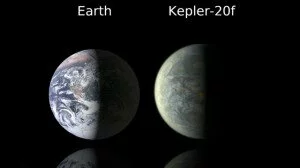 The most interesting discovery has been made by the NASA’s Kepler spacecraft astronomers.
The most interesting discovery has been made by the NASA’s Kepler spacecraft astronomers.
On Tuesday, they had made announcement that they had discovered a pair of planets the size of Earth orbiting a distant star.
However, out of the two new planets that has been discovered, one seems to be as big as Earth and the other slightly smaller than Venus.
The astronauts declared its results in an online news conference Tuesday that the new planets are the smallest planets yet found beyond the solar system.
In their amazing discovery’s report, Astronomers said the discovery showed that Kepler could indeed find planets as small as our own and was an encouraging sign that planet hunters would someday succeed in the goal of finding Earth-like abodes in the heavens.
David Charbonneau who was a member of the team that made the observations, led by colleague Francois Fressin, said, “We are finally there.”
“This demonstrates for the first time that Earth-size planets exist around other stars and that we can detect them,” Fressin said.
In fact 15 years ago, the first Jupiter-size exoplanets were discovered, and from then astronomers have been go for finding smaller and smaller planets. By such discovery, the number of Earth-sized planets going to be four from two along with Earth and Venus.
In online conference, astronaut also announced their next goal oriented step that is to find an Earth size planet in the so called Goldilocks zone of a star, where conditions are temperate for water and thus life.
Although on the other side, Debra Fischer, a planet hunter from Yale, who was not part of the team, said, “This technological feat is incredibly important because it means that the detection of Earth-size planets at larger distances is technically possible.”
There are two new planets, Kepler 20e and Kepler 20f where life is not possible because of their limiting temperature point.Kepler 20e, is the planet more closely situated to the star, is also the smaller than Venus – and it resides about 5 million miles from its star. And Kepler 20f, the more distant planet, is 10 million miles out from its star.
From the previous searching, three larger Neptune-like planets had found by Kepler.
“This is Venus and Earth in a five-planet system,” Fischer cleared it in an email. “There’s no place like home, and the Kepler data are starting to uncover some mighty familiar architectures.”
Meanwhile the total number of planets is to five. All the planets are presenting a bounteous system of unlivable planets.